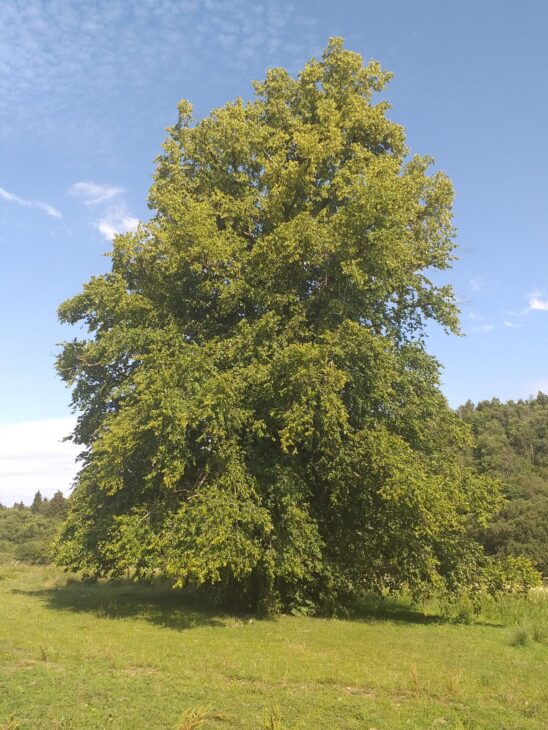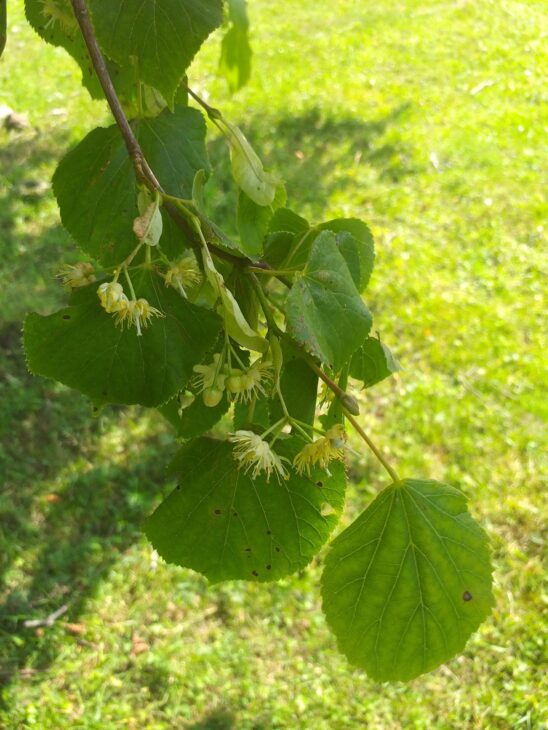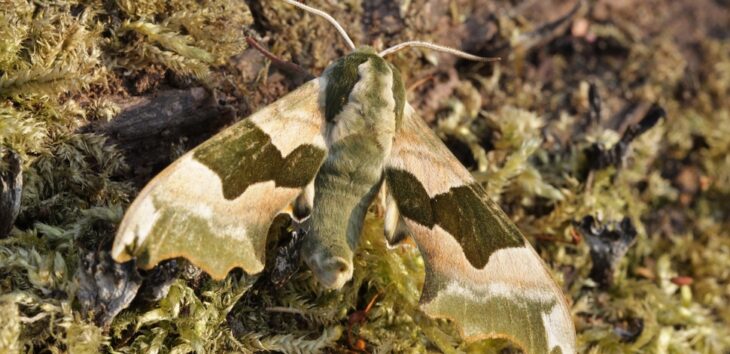Sublime lime
June and July are the months where lime trees (Tilia species), (no relation to the tangy green citrus fruit), bloom, showering us with the sweet smell of their honey like nectar. They may also be known as linden trees in other parts of Europe.

Small-leaved lime © Clare Toner, 2019.
There are three species of limes found in the UK; small leaved lime, (Tilia cordata), large leaved lime (Tilia platyphyllos) and the hybrid, common lime, (Tilia x europaea), which has characteristics of both species.
Their leaves are round or heart shaped with small yellow or white flowers blossoming in June or July.
You can identify lime species by looking at the undersides of the leaves in more detail. Small leaved lime has tufts of pale red-brown hairs in the vein axil and common lime, tufts of white hairs in vein axils. (The vein axil is the angle between the leave veins on the undersides of the leaves). Large leaved lime have hairs all over the underside.

Small-leaved lime leaves and flowers © Clare Toner, 2019.
Lime trees had significance in many cultures and were considered to be symbols of fertility and justice.
The flowers have many use making a delicious fragrant honey, tea contains antioxidants and mild sedative properties, and used in herbalism for coughs, colds and infections.
The woods is soft and easy to work for carving, musical instruments such as electric guitars, piano keys and recorders.
Lime trees are vital source of food for many animals. Aphids drink the sap and turn it into honeydew which they then secrete. Ants farm the aphids for this honeydew and tend them so they can feast on this sweet treat. Lime leaves are food for many species of moth caterpillars including the lime hawk moth.

It is thought that lime nectar may harm bees, but it may actually be due to the fact that the bees are actually visiting lime trees when they are in the period of starvation and there is only little nectar being produced by the trees. Lime nectar contains caffeine and this persuades bees to return to the same flowers even if they are nectar poor. This is the trees way of ensuring pollination and proliferation of the next generation.
The main threats to lime trees are fungi, aphid infestations and gall mites.
So whilst you are out walking, lift up your head to smell the flowers. You may notice the wonderful honey fragrance of the lime. A most delightful scent of summer.
Clare Toner, Clyde Valley Ranger
Help protect Scotland’s wildlife
Our work to save Scotland’s wildlife is made possible thanks to the generosity of our members and supporters.
Join today from just £4 a month to help protect the species you love.
Preface
June and July are the months where lime trees (Tilia species), (no relation to the tangy green citrus fruit), bloom, showering us with the sweet smell of their honey like …
